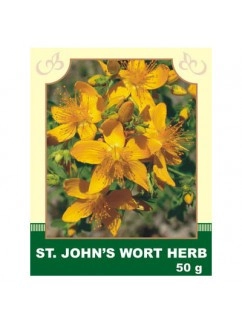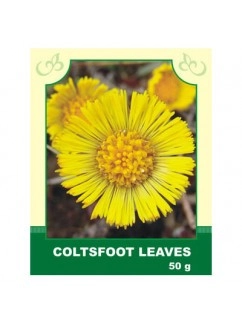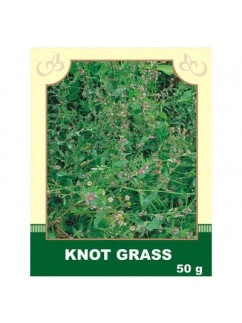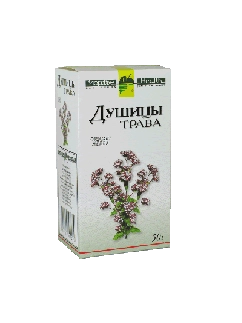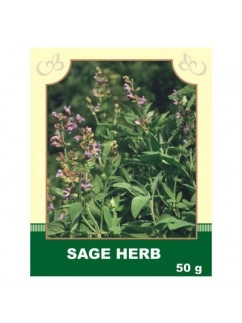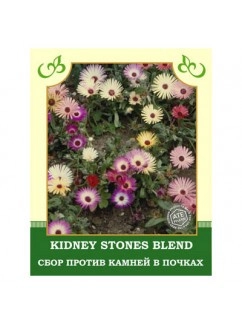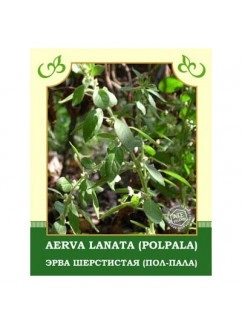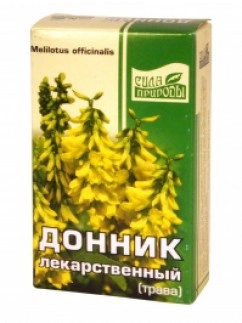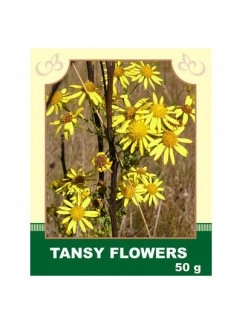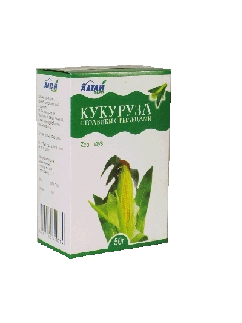Dry Herbs & Berries
Description. Herb and flowers contain different flavonoids (rutin, hyperoside, isoquercetin, quercitrin, quercetin, amentoflavone, astilbin, miquelianin), phenolic acids, phloroglucinols and essential oils. St. John's Wort has recently become one of the heavyweight herbs in medicine, mostly due to it's reputed anti-depressant effects. St John's wort is most widely known as a herb for major depression. In some countries, such as Germany, it is commonly prescribed for mild depression, especially in children, adolescents, and where cost is a concern. Lesser known medicinal attributes of this plant include usefulness as an antiseptic, pain killer, and anti-viral agent. Water infusion of St. John's Wort Herb is good for heart disorders, irritability and insomnia, for improoving bile composition and liver disorders (powerful diuretic)and for women's urogenital inflammations. St.John's Wort due to its high bio-active effect is an excellent support for men's health! Uses. St. John's wort has also shown results in the following conditions, a few of which are related to depression. They are alcoholism, bacterial infections, premenstrual syndrome, seasonal affective disorders, viral encephalitis, wounds, minor burns, hemorrhoids. Moreover, internally, St. John's Wort is believed to be of benefit for symptoms of anxiety, cough, digestion, bronchial problems, diarrhea, fatigue, flu, gout, insomnia, irritability, and ulcers. Externally, St. John's Wort can be applied for bruises, wounds, burns, hemorrhoids, sunburn, herpes sores, varicose veins, sciatica, and nerve pain. Avoid taking the herb if you are hypertonic. Water infusion is used as a mouthwash for weak gums, parodontosis and other oral inflammations.
Attention! Before using any herbal products, make sure that you have full knowledge of how the herb works and any adverse reaction it may cause.$6.99Folk remedy for strengthening hair and combating dandruff:
A decoction of coltsfoot mixed with nettle is an effective remedy for strengthening hair and combating abundant dandruff.
Internal use:
Take it internally for the following conditions: bronchial asthma, bronchitis, pleurisy, pneumonia, runny nose, flu, inflammatory processes in the oral cavity, toothache, arthritis, myositis, allergies, epilepsy, malaria, edema, shortness of breath, gastrointestinal diseases, peptic ulcer, gastritis, heart diseases, bladder, and kidney diseases.
Preparation and dosage: Pour 5 g of raw materials with 200 ml of boiling water, boil for 10 minutes, infuse at room temperature for 10-15 minutes, then strain. Take 1 tablespoon 3-4 times a day before meals.
External use:
Externally, the decoction is used for accelerating the ripening of boils, for chronic wounds and ulcers. It is also used for gargling in case of angina and for douching in inflammatory diseases of the female genital organs accompanied by discharge. For external use, pour 50 g of raw materials with 1 liter of boiling water, boil for 5 minutes, strain, and apply externally.
Contraindications: Individual intolerance.
$6.99
Description.Salmon stated: 'Knotgrass is peculiar against spilling of blood, strangury and other kidney affections, it cools inflammations, heals wounds and cleanses and heals old filthy ulcers. The chemical composition of Knot grass is complex. The herb is considered to be a treasure of protein, cellulose, tannins and sugars. It also contains phosphor, calcium, zinc, ascorbic acid, silicon and carotin. That is why it is not a surprise that knotgrass is popular with physicians and dietitians. The plant is used as it is astringent, anti inflammatory, diuretic, antiseptic, anesthetic, expectorative, cholagogic, laxative, wound healing and febrifuge. Use. Knotgrass is used for colds, bronchitis, pneumonia, coughs, asthma, tuberculosis, insomnia, mouth inflammations, gastritis, skin diseases, stomach disorders and stomach ulcers. The herb is considered to be of great help for respiratory apparatus and female breeding organs. Many women cured sterility after drinking knotgrass as tea for some time. Knotgrass prevents the formation of urinary stones. Due to presence of tannins this herb is of great value for fortifying blood vessels and for gastrointestinal tract.
Attention! Before using any herbal products, make sure that you have full knowledge of how the herb works and any adverse reaction it may cause.$6.99Internally, it is taken as an expectorant and diaphoretic for upper respiratory tract diseases, flu, and asthma. Also used as an anti-inflammatory, antimicrobial, and analgesic for rheumatism, paralysis, epilepsy; for atony of the intestines, to stimulate appetite and improve digestion; in gynecology - for uterine bleeding and women's diseases; as a sedative for fainting and mental illnesses.
Method of application and dosage: 2 tablespoons of raw material are poured with 200 ml of boiling water, infused for 45 minutes, strained. The obtained infusion is brought to the original volume. Taken orally in 1/2 cup 2 times a day, 15 minutes before meals.
Externally, used as compresses for insomnia and headaches, and for washing the head with hair loss. 10 g of raw material is poured with 200 ml of boiling water, infused for 1 hour; for douching, 20-30 g of raw material is poured with 2-3 liters of boiling water, infused until cooled. Used in warm (!) form; for baths, 50 g of raw material is poured with 10 liters of boiling water, infused until completely cooled.
Contraindications: individual intolerance, pregnancy, and for people with increased stomach secretion.
$6.99
Description. The Latin name for sage, salvia, means to heal. Modern evidence supports its effects as an anhidrotic, antibiotic, antifungal, astringent, antispasmodic, estrogenic, hypoglycemic,diuretic and tonic. Ancient physician Hyppocrates considered sage to be a sacred and the most useful herb. For thousands of years sage has been used for a variety of medicinal purposes. It has been used in connection with sprains, swelling, ulcers, and bleeding. As a tea, sage has been administered for sore throats and coughs. Herbalists have also used this herb for rheumatism, menstrual bleeding, liver disorders, strengthening the nervous system, improving memory, and sharpening senses. Sage contains the chemical substances, camphor, and cineole as well as other constituents including rosmarinic acid, tannins, and flavonoids. Even today, in many European countries sage is used medicinally as a gargle for sore throat and inflammation of the mouth and gums. Use. Sage was recommended by herbalists for fever. Modern research has demonstrated that sage reduces perspiration by as much as 50 percent. Sage is also an active ingredient in some natural mouthwashes because its tannins are thought to help kill the bacteria that cause gingivitis. Sage has traditionally been used to treat canker sores, bleeding gums, sore throat, tonsillitis, and laryngitis. Sage has a long history of use for gastrointestinal disorders. It has been shown to help relax muscle spasms in the digestive tract. One German study has found that drinking a sage infusion reduced blood sugar levels in people with diabetes, but only when they took the infusion on an empty stomach. Sage has traditionally been used to promote menstruation; pregnant women should not consume highly concentrated forms of sage.
Attention! Before using any herbal products, make sure that you have full knowledge of how the herb works and any adverse reaction it may cause.$4.99Composition: horsetail, nettle, hawthorn fruit, knotweed.
Helps remove stones from the kidneys and bladder and helps me achieve new ones.
$5.40Folk beliefs attribute unique abilities to common yarrow, such as preventing the formation of blood clots in vessels and reducing blood clotting.
Internally, it is taken as a remedy for bronchitis, tracheitis, common colds, reducing inflammation, clearing the respiratory tract from toxins and mucus, and for diseases of the urogenital system and reproductive organs. It normalizes the functioning of the gastrointestinal tract, liver, and pancreas. There is evidence of high effectiveness in cases of intestinal polyps and hemorrhoids, as well as for relieving constipation.
Method of application and dosage: Place 2 teaspoons of crushed herb in a teapot, pour 250 ml of water, boil for 3-5 minutes, and let it steep for a short while. Consume by adding sugar or honey to taste.
Contraindications: Individual intolerance; during intake, it is advisable to exclude spicy and salty foods, as well as alcohol from the diet.
$6.99Internally, it is used in the treatment of chronic bronchitis, hypertension, nervous disorders, epilepsy, insomnia, migraines, rheumatism, and radiation sickness. It is particularly noted for its application during menopause, kidney and liver diseases, ovarian diseases, and respiratory infections.
Method of application and dosage: Pour 1 tablespoon of ground herb of clover with 200 ml of boiling water, heat on a water bath for 30 minutes, cool at room temperature for 15 minutes, strain. Drink 1/3 cup 3 times a day before meals. Externally, infusion and decoction of clover, as well as ointment from clover flowers, are used for the treatment of furunculosis, purulent wounds, mastitis, otitis, and rheumatism.
Contraindications: individual intolerance, pregnancy, kidney diseases. It is a toxic plant, and strict dosage should be observed; consult a specialist before use. It is advisable to use it only in herbal blends.
$6.99Internally, it is taken as an antipyretic and sedative for cramps in rheumatism and polyarthritis, headaches, hypochondria, epilepsy; as an antiparasitic remedy for expelling roundworms and pinworms; as a cholagogue for liver and gallbladder diseases, as well as for kidney and bladder inflammations, menstrual cycle disorders, and nervous excitement.
Method of application and dosage: Decoction - 2 tablespoons of finely chopped raw material, pour 0.5 liters of boiling water, simmer on low heat for 10 minutes, let it infuse for half an hour to an hour, and drink 1/4-1/3 cup three times a day 20-30 minutes before meals.
The infusion of tansy is prepared in the same proportion. It is usually taken in 1/4-1/3 cup three times a day. In case of peptic ulcer disease, the dose of infusion and decoction can be increased to 1/2 cup per intake.
Externally, it is used for treating purulent wounds, ulcers, bruises, rheumatism, scabies, and for washing the head in case of pediculosis (lice infestation). Steep 1 tablespoon of flower heads in 400 ml of boiling water for 2 hours.
Contraindications: Individual intolerance, not recommended during pregnancy and for children of a younger age. The plant is potent, strict dosage is required.
$5.50- Description. Corn silks contain vitamin K, ascorbic acid and pantothenic acid, fatty and volatile oils and other substances. The entire corn plant has long been used in Chinese and American Indian cultures for medicinal and nutritional purposes. Research has shown that corn silk may cause the production of bile and improve liver function. Chinese research has shown that corn silk can also lower blood pressure and improve blood-clotting. Because corn silk has such a high concentration of potassium (Vitamin K), it is a powerful diuretic. It can be used for many problems with the urinary tract. It is helpful for kidney stones, cystitis, and problems with urine flow.
Use. Corn silk is used for many types of urinary tract problems. The plant can be used to sooth the lining of the urinary tract. It can help relieve pain and difficulty with urination. Corn silk can help relieve the problem of cystitis. Corn silk is believed to reduce the formation of kidney stones. It can also help relieve symptoms for person who already has stones. In China, corn silk is often used to treat fluid retention and even jaundice. Use in cases of inflammation of the gallbladder, bile duct, and hepatitis with retention of bile secretion.
Attention! Before using any herbal products, make sure that you have full knowledge of how the herb works and any adverse reaction it may cause.$6.99
If you like to use a lot of dry herbs and berries to create teas, wellness pads and an assortment of other items for well-being, our dry herbs and berries can provide you with a quick way to do it on your own. Each packet contains the herbs or berries of your choice that were freshly grown, chopped up and dried to perfection. Every herb and berries packet is 100% natural, with no artificial preservatives or added fillers. You're able to create a tasty blend with all that is provided from our large selection.


